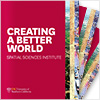Rima Habre, ScD, Assistant Professor of Clinical Preventive Medicine, MADRES Exposure Core Director, LA DREAMERs Exposure Core Director, Division of Environmental Health, Keck School of Medicine of USC, presents this Brown Bag talk:
Epidemiological evidence suggests that prenatal and early life exposure to elevated ambient and near-roadway air pollution can potentially alter childhood and emergent adult respiratory and metabolic health, especially in disadvantaged minority and low-income groups disproportionately exposed to mixtures of multiple environmental chemicals.
In large cohort studies of chronic diseases, air pollution exposure is typically assigned at a residential level based on a single or a limited number of central site measurements within a few kilometers. This approach, while significantly more cost-effective than taking personal measurements in thousands of participants, cannot capture the fine scale spatial variability in air pollution levels immediately outside the residence. Furthermore, given that individuals spend the majority of their time in indoor environments and are mobile, these approaches do not capture their ‘true’ personal exposure, resulting in measurement error and attenuated power to detect associations in health studies.
Through her work as the Director of Exposure Assessment in the newly established LA DREAMERs (Life course Approach to Developmental Repercussions of Environmental Agents on Metabolic and Respiratory health) center and the MADRES (Maternal and Developmental Risks from Environmental and Social Stressors) environmental health disparities center, Dr. Habre will present the various exposure modeling and measurement techniques she employs to overcome these challenges, going from the macro- to the micro-scale in space and time.
These include reconstructing the residential histories of 12,000 participants in the Children’s Health Study to span their entire life course starting from pregnancy, developing novel spatiotemporal models with improved spatial and temporal resolution in collaboration with her colleagues using machine learning methods, and conducting state-of-the-art personal measurements in subsets of participants to construct and validate personal exposure models.
The ultimate goal of improved space and time resolution in assessing exposure to multiple pollutants in these pediatric research studies is to be able to identify critical components of the air pollution mixture and critical prenatal and early life windows of exposure associated with health deficits in later life.
Date/Time
March 21, 2017 @ 12:30 pm - 1:30 pm
Location
Spatial Sciences Institute Conference Room (AHF B57J)



